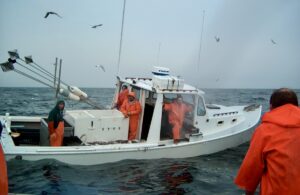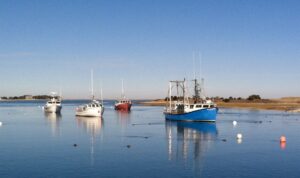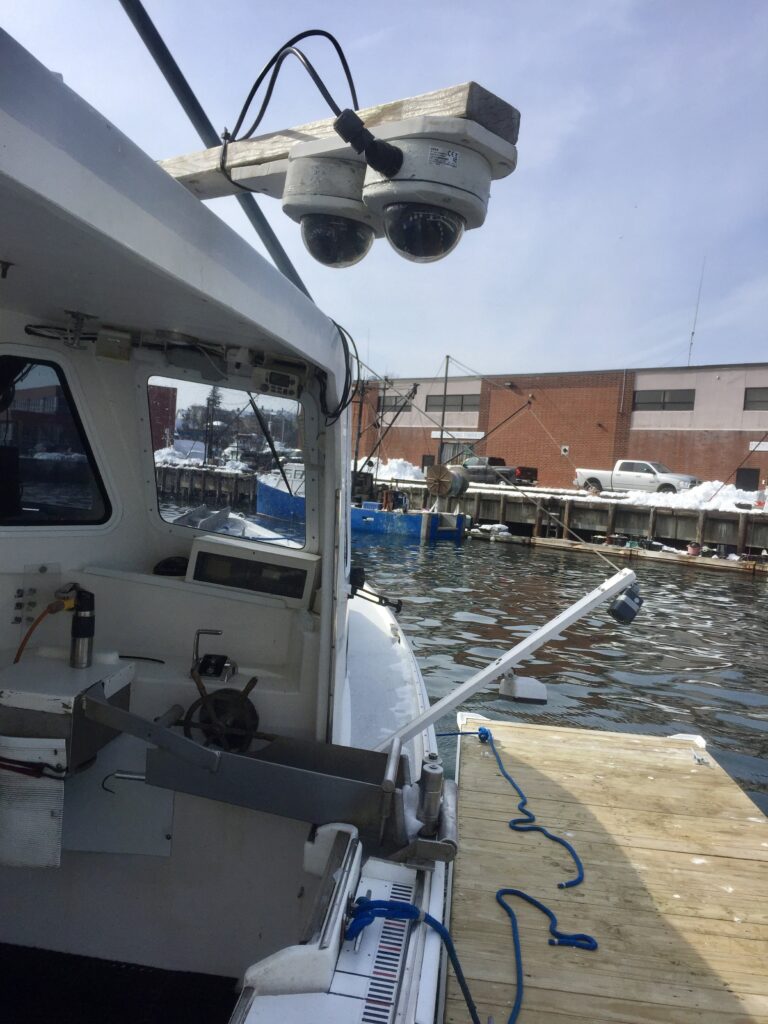
In New England, groundfish fishermen have been piloting electronic monitoring systems since 2005. At first, their interest in EM related to the flexibility and safety that comes with having one less human aboard a small boat (35-40’) and the cost savings of using a camera instead of an observer. The ensuing 15-plus years have seen increasing discrepancies between what fishermen see on the water (in terms of fish populations) and what scientists say is available to catch. These discrepancies have led to chronic frustration with fisheries managers and also to an understanding among fishermen that EM isn’t just about cost-savings and bunk space, it also has an important role to play in improving the fisheries data and “best available science” that informs stock assessments. Increasingly, New England fishermen believe that accountability, unbiased data (the camera never sleeps!), and a modernized data infrastructure can result in more-timely assessments and much-improved alignment between current fish populations and annual catch limits.
 Given those high expectations, dozens of Audit Model EM fishermen were understandably upset to learn that throughout several years of EM pilots the catch data from their fishing trips was excluded from stock assessments because they were on an exempted fishing permit and “not representative of the rest of the fleet.” Even now, under an operational EM program, the discards on Audit Model EM trips continue to be excluded from stock assessments while the region’s fisheries scientists wait for NOAA’s new Catch Accounting and Monitoring System (CAMS) to come online, in order to fully access this new dataset.
Given those high expectations, dozens of Audit Model EM fishermen were understandably upset to learn that throughout several years of EM pilots the catch data from their fishing trips was excluded from stock assessments because they were on an exempted fishing permit and “not representative of the rest of the fleet.” Even now, under an operational EM program, the discards on Audit Model EM trips continue to be excluded from stock assessments while the region’s fisheries scientists wait for NOAA’s new Catch Accounting and Monitoring System (CAMS) to come online, in order to fully access this new dataset.

In response, the Cape Cod Commercial Fishermen’s Alliance, with funding from Net Gains Alliance, contracted with Cate O’Keefe of Fishery Applications Consulting Team to investigate and document the global use of EM and fishery dependent data in stock assessment processes in order to assist the region in fully utilizing the EM data in stock assessments. Cate analyzed lessons learned from other regions and developed recommendations for New England fisheries to maximize the utility of EM data. Perhaps the most surprising hurdle to using EM data in stock assessments is not the quality of the data, but the lack of a regional relational database infrastructure. The report provides New England with hope that this important data stream will be used in the near future, but also provides useful advice for other regions exploring EM. The report’s comprehensive appendices include EM source documents for operationalizing the 2021 EM Audit Model Program, a review of modeling methods to incorporate fishery-dependent data into stock assessments, and reviews of example EM programs from other regions.
![]() New data streams can be incorporated into assessments on a stock-specific basis, which occur every 2-3 years for each species. While preparing the report, we engaged the American Plaice Research Track Assessment Working Group to review EM data and determine if they would approve it as a data source to be used in the biannual Management Track Stock Assessment, which updates the total allowable catch. While they couldn’t use the EM data in the
New data streams can be incorporated into assessments on a stock-specific basis, which occur every 2-3 years for each species. While preparing the report, we engaged the American Plaice Research Track Assessment Working Group to review EM data and determine if they would approve it as a data source to be used in the biannual Management Track Stock Assessment, which updates the total allowable catch. While they couldn’t use the EM data in the

2022 assessment because of the CAMS delay, we did secure the region’s first Research Track Stock Assessment EM-related research recommendation: Future assessments should consider deriving discards from electronic monitoring vessels in those programs, and information on length distribution from electronic monitoring should be considered for estimating composition of discards. Future groundfish assessments that incorporate this recommendation will evaluate the available EM data and should be able to incorporate the full dataset once CAMS is online. The CAMS system was recently reviewed by the Center for Independent Experts (CIE) with results expected this spring.
Report recommendations include:
- Detailed list of analyses of data collection methods and data products needed to ensure EM data meets similar standards in quality and can be integrated with existing data sets.
- Specific data treatments and modeling approaches should be identified to ensure that EM-generated datasets are applied in stock assessments in the future.
- The Northeast region must implement a relational database infrastructure.
The report concludes that the audit model and maximized retention model EM programs operating in the Northeast multispecies fishery can improve performance of stock assessments by generating accurate, unbiased data, better characterizing fishery discards, and incentivizing individual accountability to minimize unreliable information.


